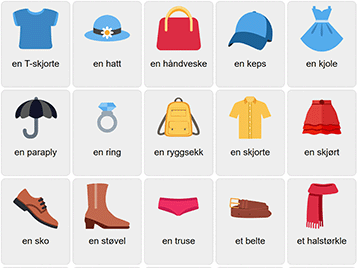 Norwegian (Bokmål) Learning Games
Norwegian (Bokmål) Learning Games
Norwegian has two official written forms: Bokmål, which is influenced by Danish due to historical union with Denmark, and Nynorsk, based more directly on Norwegian dialects. This unique situation reflects Norway's diverse linguistic heritage and landscape.
Norwegian is known for its dialectical diversity, with a wide range of regional variations in pronunciation and vocabulary, despite the country's relatively small size. This is a result of the mountainous terrain, which historically limited communication between regions. Interestingly, Norwegians often take pride in their local dialects, seeing them as an important part of their cultural identity.
The language is characterized by its tonal qualities and pitch accents, which set it apart from most other European languages. Norwegian vocabulary has been influenced by both Old Norse and Middle Low German, and more recently by English. The word for computer in Norwegian, 'datamaskin,' is an example of modern word formation, combining 'data' with 'maskin' (machine). Norway's rich literary tradition, from the sagas of old to the plays of Henrik Ibsen and the novels of Sigrid Undset, adds to the allure of Norwegian as a language deeply connected to its history and culture.
 Vegetables in Norwegian
Vegetables in Norwegian Fruits in Norwegian
Fruits in Norwegian Colors in Norwegian (Bokmål)
Colors in Norwegian (Bokmål) Clothes in Norwegian
Clothes in Norwegian Body Parts in Norwegian
Body Parts in Norwegian Animals in Norwegian
Animals in Norwegian Numbers 11-20 in Norwegian
Numbers 11-20 in Norwegian Numbers 1-10 in Norwegian
Numbers 1-10 in Norwegian